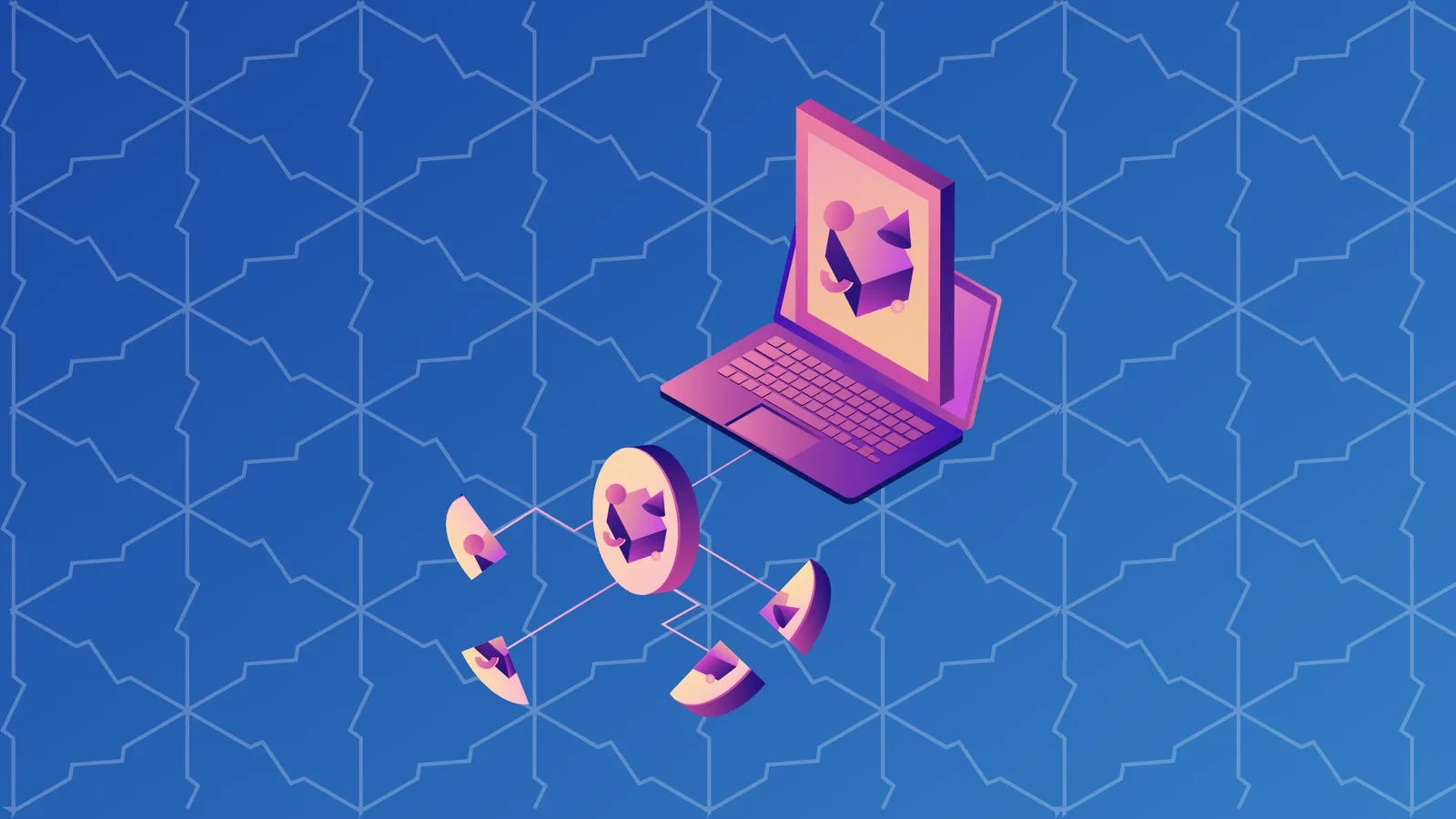The first NFTs weren't fractional.
In order to understand what a fractional NFT (F-NFT) is, we should review what a traditional NFT is. Non-fungible tokens (NFTs) are usually indivisible, unique, and not interchangeable. While something that is “non-fungible” isn’t interchangeable (by definition), something that is fungible is. For example, bitcoin (BTC) and ether (ETH) are fungible because they are both freely interchangeable in much the same way U.S. dollars (USD) are. You can easily exchange your $5 bill for a different $5 bill (or five $1 bills) without issues or a change in its monetary value.
NFTs are unique blockchain tokens that allow you to verify proof of ownership for non-fungible things such as digital art, personal records and data, real-world assets (RWAs), and more. NFT ownership allows you to prove you own the original in the same way that you can prove you hold a fungible blockchain asset like bitcoin (BTC). While an NFT image can be “copied and pasted” at ease, the ownership rights can’t be. You could compare NFT ownership verification with a copyrighted song or film. While it can easily be copied (albeit illegally), you certainly don’t own the film “Transformers: The Last Knight” (copyright holder notwithstanding).
If NFTs are unique and indivisible, what are fractional NFTs?
Fractional NFTs Explained
A fractional NFTs is an NFT or a collection thereof (multiple NFTs) that can be subdivided into smaller pieces or units, which allows for fractional ownership of the NFT(s) in question.
Decided by whoever is fractionalizing an NFT, it can be divided as many times as one would like — from only two pieces to more than a billion. In general, NFTs that sell for a higher price are fractionalized into more pieces so each individual fraction can be more affordable. An NFT that sells for $100 probably wouldn’t be fractionalized at all as the undivided cost would be affordable enough that subdividing it wouldn’t confer much benefit (to a seller or buyer).
F-NFTs for Blockchain-Based Assets
Fractional NFTs can simply be fractionalized versions of popular and expensive NFTs. Collections such as Bored Ape Yacht Club (BAYC) and CryptoPunks have seen their NFTs sell for $2–3 million a piece; three of the rarest CryptoPunks have sold for more than $10 million. While these aforementioned purchases were sold as solitary NFTs, for such high-value NFTs fractionalization could make a lot of sense. It broadens access to NFT exposure in a way that is affordable for significantly more investors and collectors — and potentially makes the seller a better profit as well.
In November 2022, the total market cap of fractional NFTs was valued at more than $30 million. At that time, the most expensive F-NFT was “The DOGE NFT” (of the well-known doge meme), valued at $12.07 million. Fractionalized into more than 2.2 billion tokens, you could purchase a tiny piece of history for as little as $0.0007/token. Only separated into 10,000 tokens, you could also purchase part of CryptoPunk #7171 for less than $30.
F-NFTs for Real-World Assets (RWAs)
While fractional NFTs for on-chain (on the blockchain) assets provide real utility, many fractional NFT platforms and services provide you access to off-chain (real world) assets such as real estate, yachts, jets, fine art, and other luxury items. As previously mentioned, this allows retail investors access to markets and items that previously had a prohibitively high barrier to entry.
Imagine a Miami highrise that is tokenized into a million units. What was once an investment opportunity only available to high-net-worth individuals (HNWIs) can now be available to millions more. A good comparison would be the traditional stock market. While you can’t buy a billion- or trillion-dollar company, you can get stock exposure to companies like Tesla (TLSA) and Walmart (WMT) for less than $200 (at the time of writing).
Cons of Fractional NFTs
One issue with fractional NFTs concerns the legal uncertainty in certain jurisdictions. For example, some believe fractionalized NFTs are more likely to be classified as investment products and securities (stocks) under U.S. law. For this reason, some recommend fractional NFT ownership solely in jurisdictions where robust legislation is already in place.
Another issue is that some fractional NFT creators can initiate a buyout option by transferring NFT-linked tokens to a smart contract. This typically starts a timed auction. The other token holders can bid a higher price, but if they don’t, the buyout will be completed and the fractionalized NFT will be returned to its original owner in full. While you’ll still be paid for your fraction, this buy-back option can force you to sell even if you didn’t want to.
Pros of Fractional NFTs
One of the main benefits of fractional NFTs is democratized access. By lowering the barrier to entry, it makes expensive NFTs accessible to those who can’t afford to purchase a full CryptoPunk — or apartment building. This also increases trading liquidity which helps with price discovery — the setting of a fair market price.
This increased liquidity can benefit both sides of the transaction (buyers and sellers). When selling a $350,000 NFT, you may fetch a better price — and a quicker sale — if you fractionalize it and sell it to a larger group (instead of a stand-alone buyer). For buyers, this liquidity is also advantageous as it allows them to easily resell for a profit if the opportunity presents itself. For buyers of expensive NFTs that aren’t fractionalized, it can take weeks or months to find a buyer.
The Inherent Contradiction in Fractional NFTs
Some consider fractional NFTs to be both divisible and indivisible. The NFT itself isn’t divided (Who would want 1/10,00th of an atomized Cryptopunk?), while the tokenized valuation of it is. Some have analogized fractionalized NFTs to foods such as cake or pizza as they can easily be divided to provide value (taste, satiety) to multiple people. A whole pizza can be consumed individually (if you’re hungry), shared by two, or consumed by a small group. It provides value in all instances. However, some find the food comparison a little unappetizing.
Some would say a fractionalized NFT is more analogous to an ancient Ming vase. It can sell for more than $10 million when in one piece but drops significantly in value — unlike pizza — when it's subdivided into 12 — or a million — pieces. Regardless of your take on this complex topic, most believe fractional NFTs will be increasingly used as the technology advances and legal frameworks are established for fractional NFTs and related products.
In brief
- A fractional NFTs is an NFT or a collection thereof (multiple NFTs) that can be subdivided into smaller pieces or units, which allows for fractional ownership of the NFT(s) in question.
- Many fractional NFT platforms and services provide you access to off-chain (real world) assets such as real estate, yachts, jets, fine art, and other luxury items.
- By lowering the barrier to entry, fractionality makes expensive NFTs accessible to those who can’t afford to purchase a full CryptoPunk — or apartment building.
That's the final chapter of Getting Started with NFTs. Now, on to our quiz and the opportunity to mint an NFT certificate proving your newly acquired NFT knowledge!


